Salvador Dalí and filmmaker José Montes-Baquer, in honor of underappreciated Surrealist Poet Raymond Roussel, shot “Impressions,” a fake documentary of an non-expedition to Mongolia in search of gigantic mythic hallucinogenic mushrooms.

Watch this video on YouTube
Impressions of Upper Mongolia : Salvador Dalí’s Last Film About a Search for a Giant Hallucinogenic Mushroom
By Josh Jones, Published by Open Culture
Salvador Dalí (May 11, 1904–January 23, 1989) and his fellow surrealists owed a great debt to the wealthy, dandyish French writer Raymond Roussel (1877-1933), as much as modernist poets owed the Symbolist Jules Laforgue. But like Laforgue, Roussel is much more often referenced than read, and he isn’t referenced often. A hermetic, insular writer who seems to belong to a private world almost entirely his own, Roussel despaired of his lack of success and committed suicide in 1933. His aesthetic progeny, on the other hand— Dalí, Marcel Duchamp, André Breton—were showmen, self-promoters and media geniuses. So it’s particularly poignant, in the quirkiest of ways, that Dalí chose for his final film project a collaboration with José Montes-Baquer in 1976 called Impressions of Upper Mongolia (“Impressions de la haute Mongolie”—below with English subtitles), an homage to Roussel’s self-published 1910 novel Impressions of Africa.
STORY: Geo-Fauvism and Anthropocene: Altered Planet, Wild Literature
“Dalí is a universal genius. for this reason, hundreds of people approach him daily to enrich themselves. but what they do not know is that Dalí, as well as being a universal genius, is also an intellectual vampire who enriches himself with all the people who come close to him.” — Salvador Dalí upon meeting with José Montes-Baquer
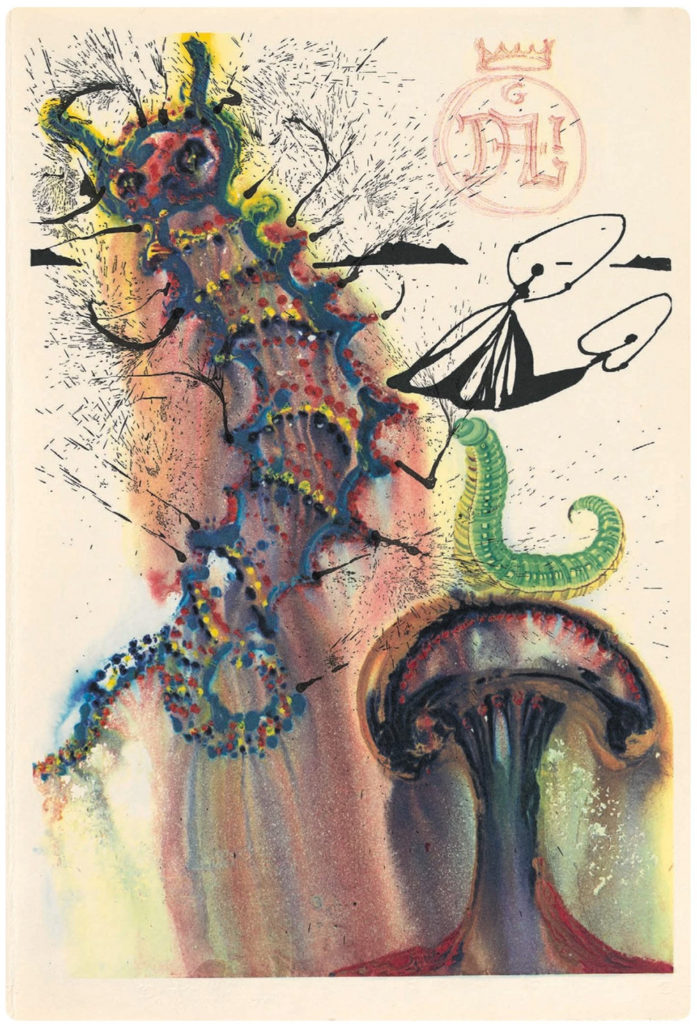

Impressions de la Haute Mongolie – Hommage à Raymond Roussel – The imaginary journey conceived by Dalí revolves around the story of a Mongol princess during a wave of starvation, feeds her subjects powdered mushrooms, which produce hallucinations, a collective madness that stimulates them to create rock paintings. In the film, a scientific expedition is sent to Upper Mongolia to discover the huge white hallucinogenic mushroom, unknown in the West, which causes these effects in this civilization.
Roussel, who traveled widely, never traveled to Africa, and his “impressions” are wholly creations of the kind of wordplay that Dalí made visual in his painting (including a canvas with Roussel’s title). Like Roussel’s novel, Impressions of Upper Mongolia is a surrealist fantasy with only the most tenuous connection to its ostensible geographical subject. The entire 50-minute adventure takes place, MUBI tells us, “in [Dalí’s] studio-museum in Cadacès (Spain).”
The film opens with an epitaph for Roussel in German, French, and English that lionizes the proto-surrealist as “the monstrous master of mystical language.” “Mystical” is indeed the mot juste for this film. Dalí narrates a story about an expedition he supposedly sent to the titular region in search of a giant hallucinogenic mushroom. Flavorwire describes the “quasi-fake documentary” succinctly: “…it’s every bit as trippy as you would expect it to be. Along the way, there’s a lot of mustache-waggling, yelling at Hitler, discussions about Outer Mongolia and Raymond Roussel, intense close-ups of insects, and other eccentric additions — like Dalí’s overacting.”
Whatever his or her ideal is: to earn a large salary,
To give birth to children, to see the threshing floor overflowing with his grain
Or to make his pulse rate slow and settle down,
Feel that, to succeed, it is better to think and act
Than to make — jobbing worker, infertile wife,
Harvester or invalid — a wish in the moment
That a shooting star leaves its shining trail;
Tired of giving his sweat to the bourgeoisie to drink
(It is often for Peter that Paul suffers and works;
Vespucci exploited Columbus’s discovery;
And it is to furnish a pearl for some finger or waistcoat
That an oyster spends its life laboring;), laws to his boss;
The slut in her attic dreams of living in style;
And to see his hands adorned with amethysts and holding a crozier
Is a fantasy dear to each fledgling priest.— Raymond Roussel, Excerpt from New Impressions of Africa
For all his ease with film, and his outsized reputation in film history, Dali only ever collaborated with other filmmakers, first Luis Buñuel, then Walt Disney, and finally Baquer (who called him, approvingly, “an intellectual vampire”). In an interview, Baquer reveals that Dali chose the title and the Roussel references. He also “commissioned” the film, in a way, by handing Baquer a pen that he had been urinating on for several weeks after “observing how the urinals in the luxury restrooms of [the St. Regis Hotel] have acquired an entire range of rust colours through the interaction of the uric acid on the precious metals.”
Baquer recounts that Dali ceremoniously told him to “take this magical object, work with it, and when you have an interesting result, come see me. If the result is good, we will make a film together.” The result is most certainly interesting. A fitting tribute to Roussel, it recalls Trevor Winkfield’s comments on the world of the writer, one that “belongs entirely to the imagination. Nothing real intrudes; it all derives from his head. Like a fairy tale, but a believable one.”
Josh Jones is a writer and musician based in Durham, NC. Follow him at @jdmagness
Updated 31 January 2024

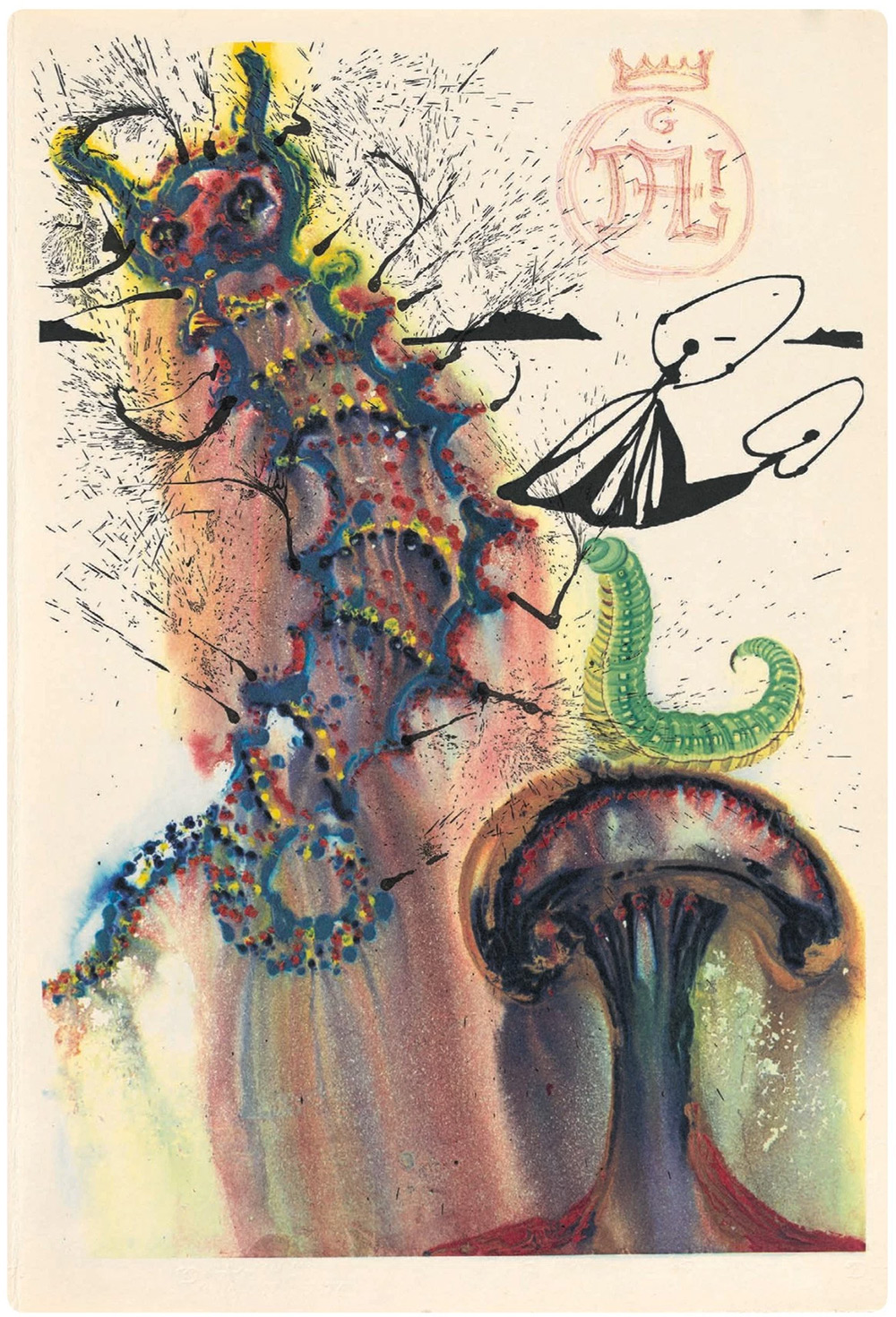


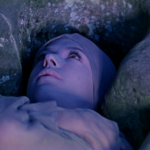
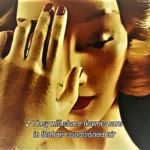
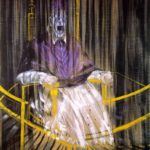
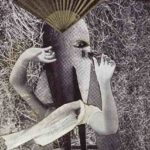

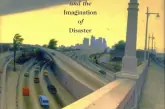




Mac Talley: “Sounds promising!”
The fuzzy video quality, mixed with two sets of competing subtitles, detract from the clarity, but hey, it’s surrealism. The interesting thing is that Dali added images and whatnot to the actual film cells, in his usual bid to control everything. Despite being an artist who refers to himself in the third person all the time, he is pretty amazing. Henry Miller did call him “The Biggest Prick of the 20th Century,” which says something…
Pingback: Visual Poems, Silent Dances of the Maquette Theatre | WilderUtopia.com
Pingback: Creators of the Cool: Miles Davis and Gil Evans
Pingback: Lady Lazarus: The Hurt Imagination of Sylvia Plath
Pingback: Memoirs of Mushrooms: Celebrating National Mushroom Day 2024 – The Spore Explorer